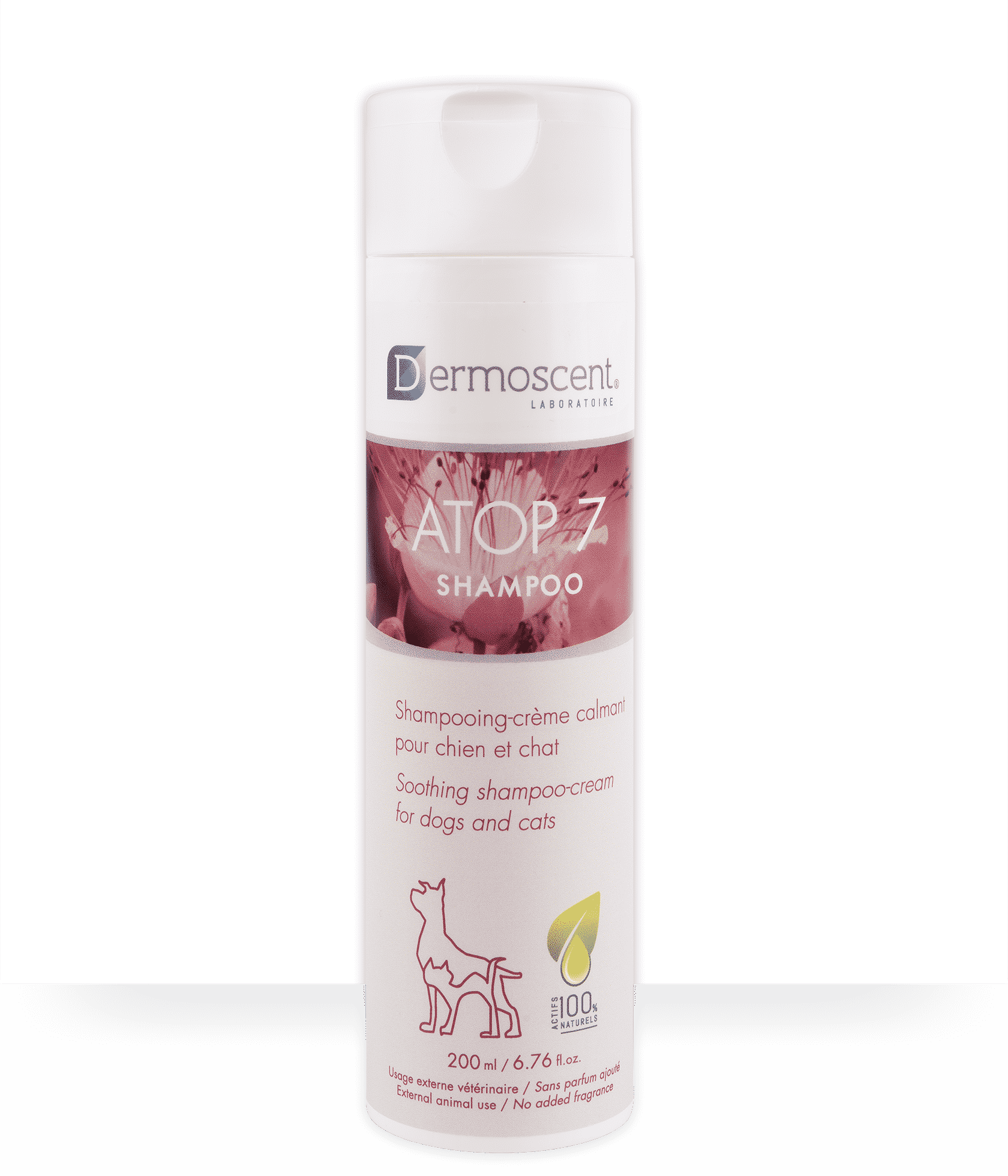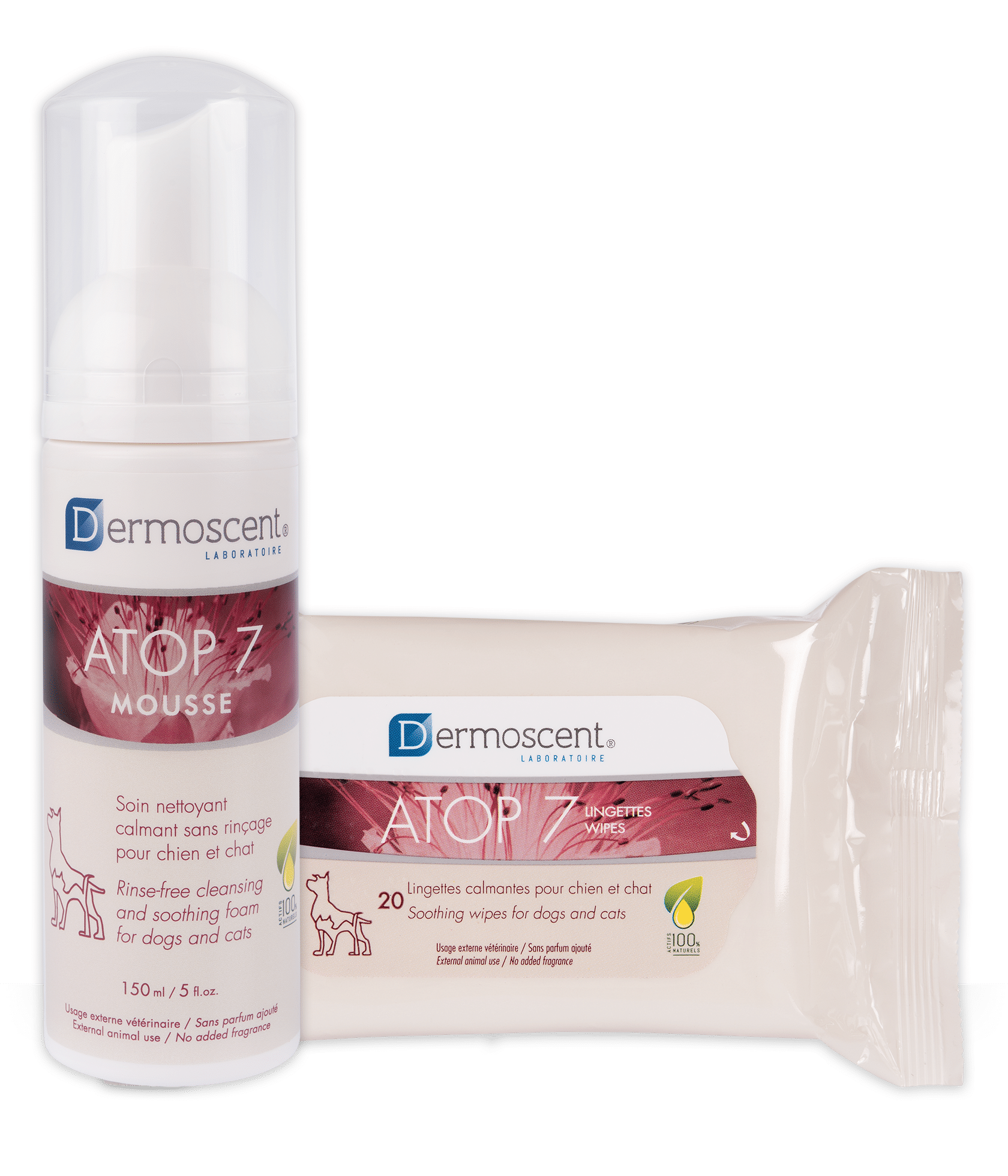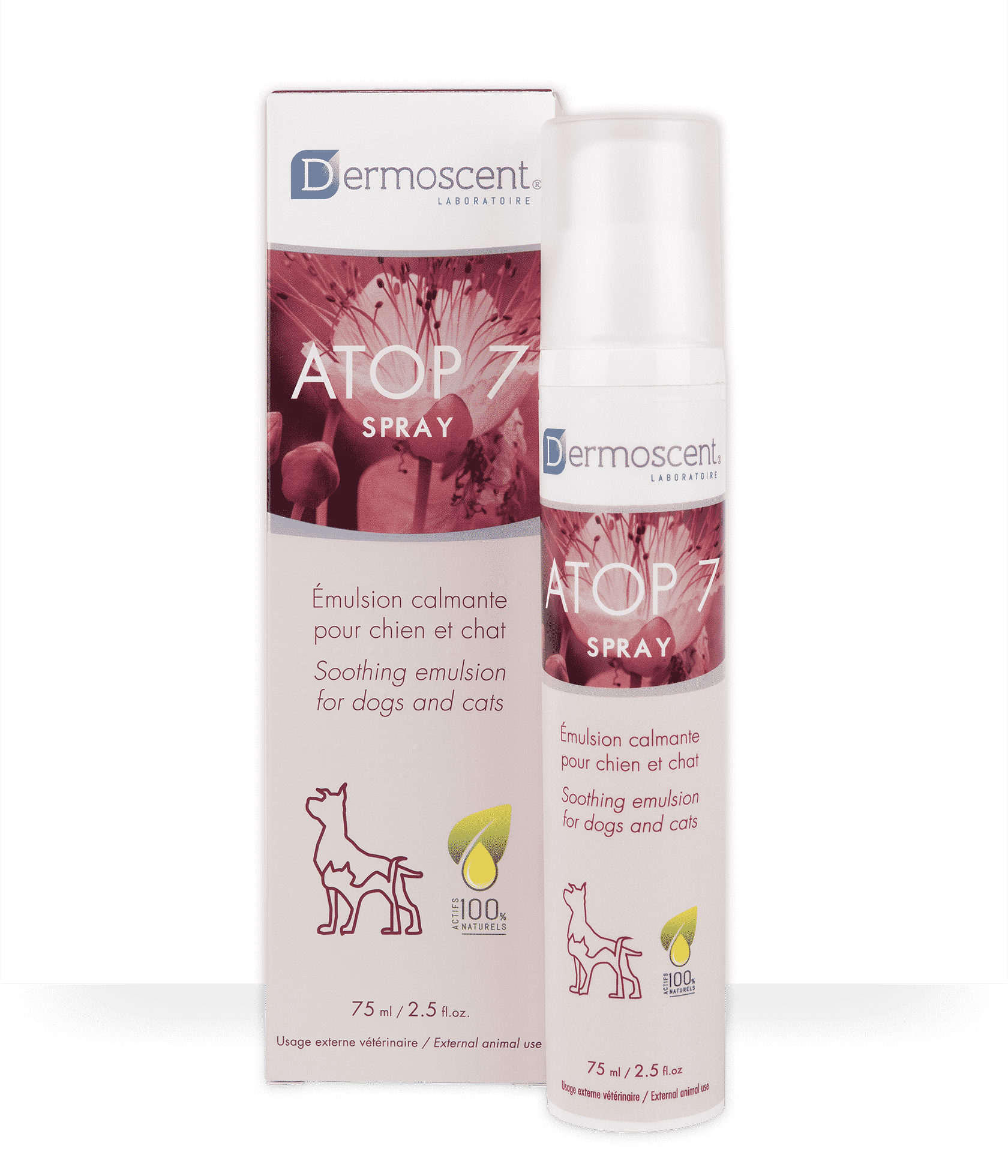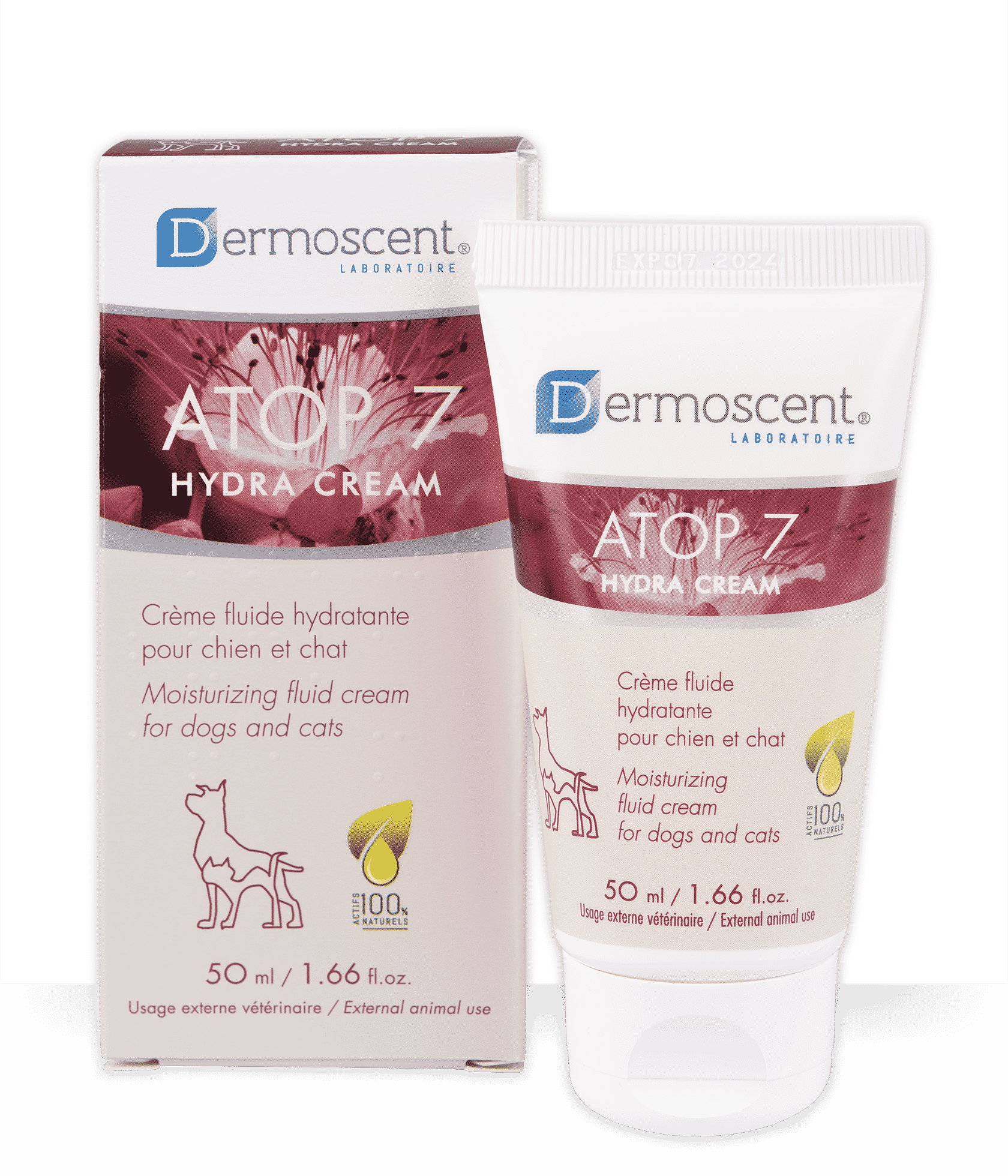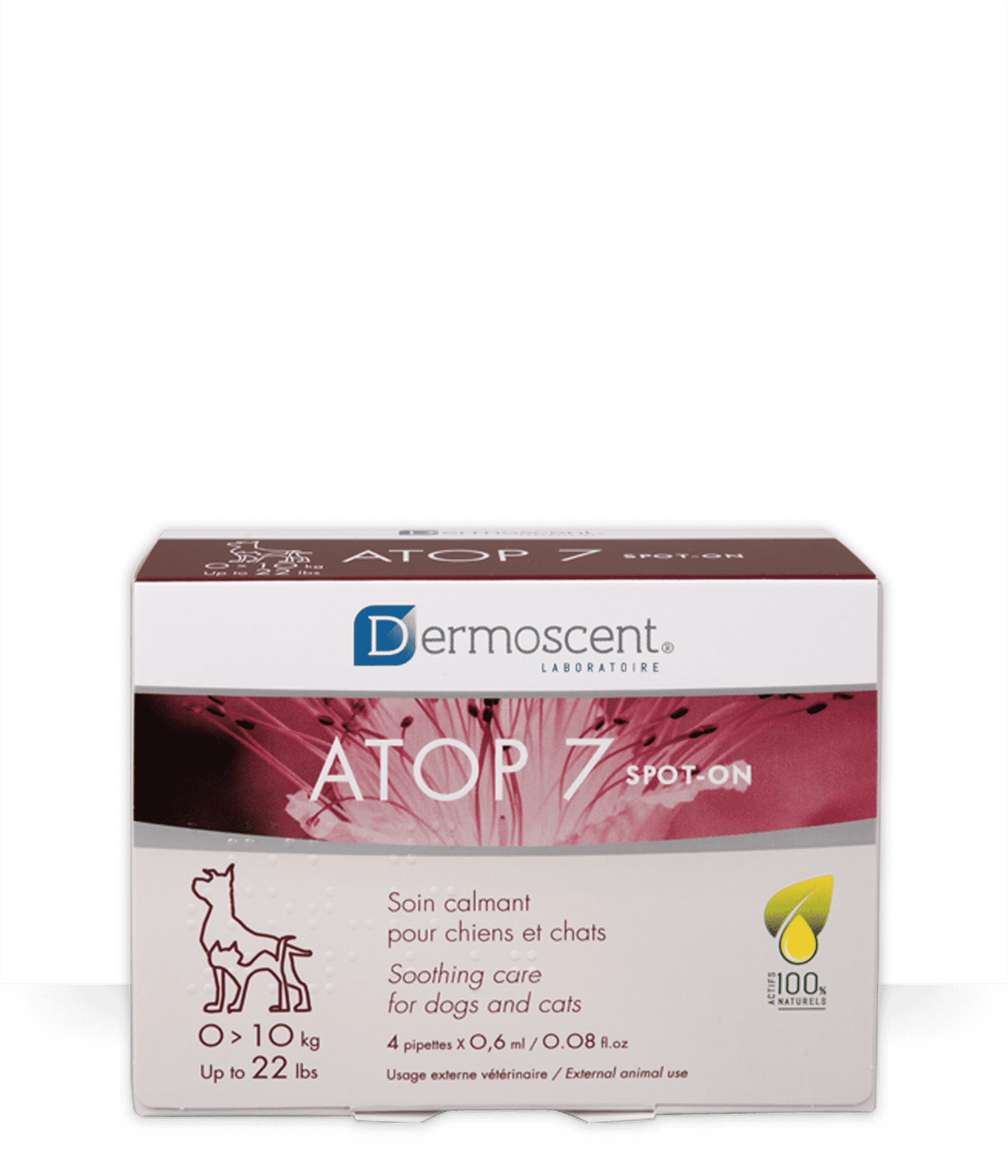Spring is here – Resurgence in Allergic Dermatitis

Like their owners, our four-legged friends find themselves confronted by seasonal allergies with the arrival of warmer weather. There may be multiple factors at play, which can be interlinked, that lead to the onset of allergic dermatitis (skin conditions caused by allergens).
The "culprits" - factors that cause an allergic reaction
 Pollen (microscopic grains that allow plants reproduce and are widely dispersed by the wind, especially in spring); pollen from trees, grass and weeds.
Pollen (microscopic grains that allow plants reproduce and are widely dispersed by the wind, especially in spring); pollen from trees, grass and weeds.- Parasites:
- Microscopic mites in the environment that are found in dust and textiles and feed on organic debris (dandruff, dead skin, etc.) or other mites (ticks, scabies mites, etc.).
- Specific case: Allergies to flea saliva. One or several flea bites for sensitive animals is enough to trigger an allergic reaction with severe itching.
- Mold
- Allergens found in food, etc.
The "partners in crime" - factors that weaken the skin
These components weaken the skin’s protective film, therefore making it more sensitive and permeable to allergen penetration.
- Chemical irritants (using human cosmetics not suitable for animals, cleaning agents that are too abrasive, etc.)
- Harsh outdoor conditions (heat, cold, drought, pollution)
- Genetic predisposition (French Bulldogs, Terriers, etc.)
The "offence" - allergic dermatitis
Allergic dermatitis is the result of an inadequate immune reaction that occurs at skin level. The body identifies elements that are not usually harmful, or significantly harmful, as foreign or dangerous. It then triggers a series of defensive reactions against the aggravating agents.
This reaction is often accompanied by damaged skin (weakened skin barrier). As such, water loss is observed (increased skin dryness) and allergens may penetrate more easily (a vicious cycle). Germs sometimes colonize damaged areas and may cause secondary skin infections.
What are the symptoms?

Redness, itching and dryness that lead to discomfort and even pain for the animal.
In some severe cases, inflammation and scratching are intense and the skin ultimately takes on a rough, thick and dull appearance, known as “crocodile skin”.
When to consult?
Without delay if you see that your pet is scratching and biting him or herself excessively, and especially if you notice scabbing, localized hair loss, redness and a rancid odor.
Your vet will try to identify the root of the problem, following a thorough examination for skin-related symptoms, their development over time and possible recurrence. Depending on the cause, your vet will propose the appropriate medical treatment to relieve itching, such as prescribing corticosteroids or antihistamines. At the same time, he or she may also prescribe complementary care (shampoo, spot-on, spray, etc.) to be applied directly to the skin in order to strengthen the protective skin barrier. This complementary care will often lower the medication dosage, therefore minimizing adverse effects and reducing the duration, while improving your pet’s comfort.
Dr. Isabelle Mennecier, veterinarian

